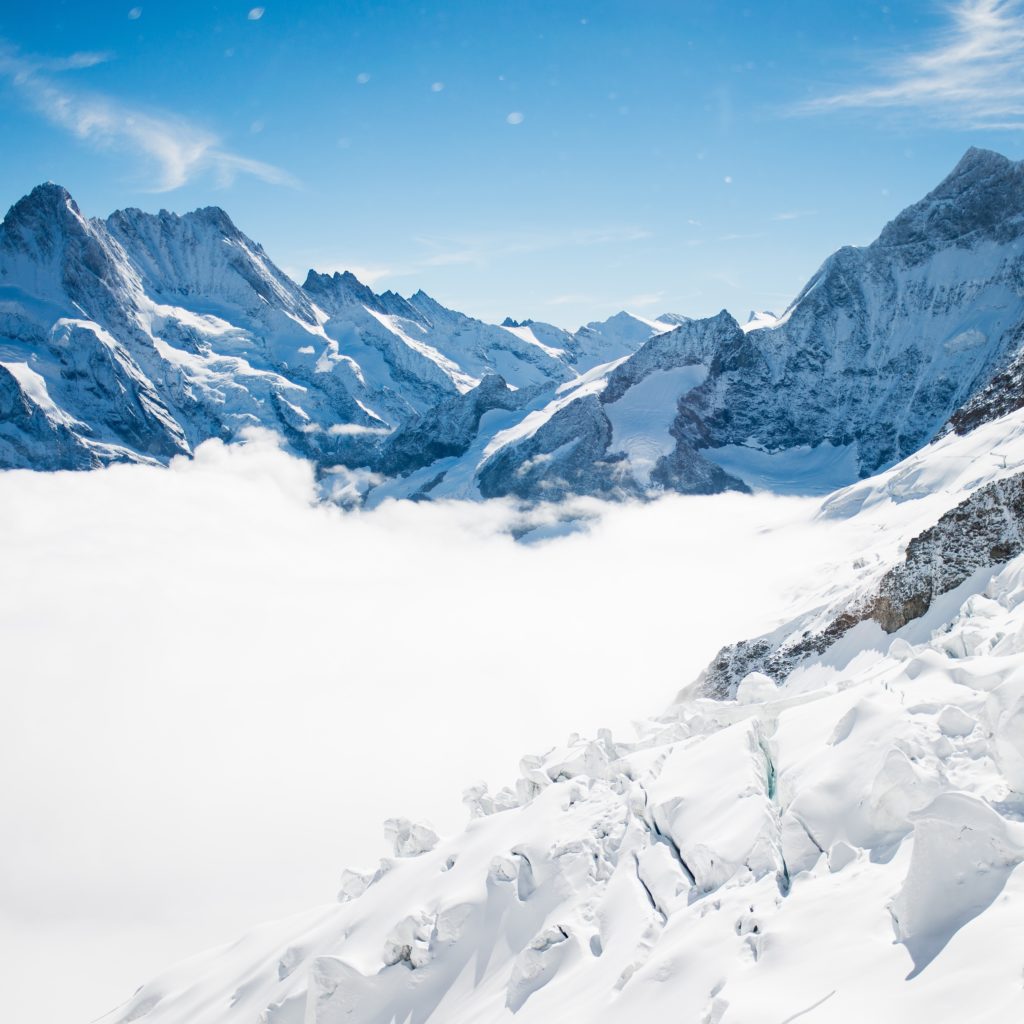Tiny pieces of plastic have made it absolutely everywhere in our environment. Scientists have found microplastic (MP) even in the remotest of locations.
MPs come from a variety of sources, including larger plastic debris that degrades into smaller and smaller pieces.
Now more than ever, our clothes are made of plastic. With every wash, plastic fibers leach into the environment.
In addition, very tiny pieces of manufactured polyethylene plastic called “microbeads” (a type of MPs) are added to health and beauty products such as cleansers and toothpastes. Similar to the plastic fibers in our clothes, these are also affecting our environment as they are washed into our water systems.
A recent study found abundant levels of MP pollution in snow from the Arctic to the European Alps.

But how did they get there?!
The fact that the small particles are transported in air is not new, however, the concentrations of microplastics are much higher than previously thought.
This is the result of investigations by researchers of the Bremerhaven Alfred Wegener Institute (AWI), which was published earlier this month in the journal “Science Advances”.
The scientists wanted to investigate the pathways of the MPs on their way to the North. Therefore, they analyzed snow samples from the Arctic and compared them to snow samples from both remote (Swiss Alps) and populated (Bremen, Bavaria) European sites, to find out whether atmospheric transport plays a role.
Eventually, they found MPs in 20 of 21 samples. The MP concentration of Arctic snow was significantly lower (14,400 microplastic particles per litre) than European snow (190 to 154,000 microplastic particles per litre), but still substantial.
Polymer composition varied strongly, but varnish, rubber, polyethylene, and polyamide dominated overall.
The study shows that the fine particles can even be found in snow and that they are falling from the sky – after often have traveled thousands of miles – in unexpectedly high concentration.
During its passage through the atmosphere, snow binds airborne particles and pollutants, which are eventually deposited on Earth’s surfaces.
The data highlights that atmospheric transport and deposition can be notable pathways for MPs meriting more research.
The study provides the first data on contamination of snow by MPs, stating “microplastic concentrations in snow were very high, indicating significant contamination of the atmosphere”.
These results are alarming!
Plastic pollution is a problem of growing environmental concern – production rates are continuously increasing and annual waste production is projected to rise to 3.4 billion metric tons in the next 30 years.
Many countries still have inefficient waste management and water treatment systems allowing leakage to the environment, which is exacerbated by littering behavior.
At the same time, plastic is designed to be durable and persists in the environment for long periods of time.
The large concentrations of MPs and microfibers in snow highlight the importance of the atmosphere as a source of airborne MPs and microfibers. Through this pathway, MPs likely find their way into soil and aquatic environments and therefore also into food chains.
Most of the particles found in the study were in the smallest size range, indicating large numbers of particles below the detection limit of 11μm.
There is reason to fear that there might be many more MPs, which were not detectable because of their little size. Those very tiny plastic particles might be even more harmful for human health, as they (such as other air pollutants) can get deep into our body – or even into our blood.
Health effects of the ingestion of MPs via food, water, and breathing are still unknown, but it is most likely that they can cause health problems, just as other particles in the air, such as dust, dirt, soot, and smoke.
This study has prompted scientists to warn of significant contamination of the atmosphere and demand urgent research into the potential health impacts on people. It’s high time!
By Stefan Simon for Collective Green
